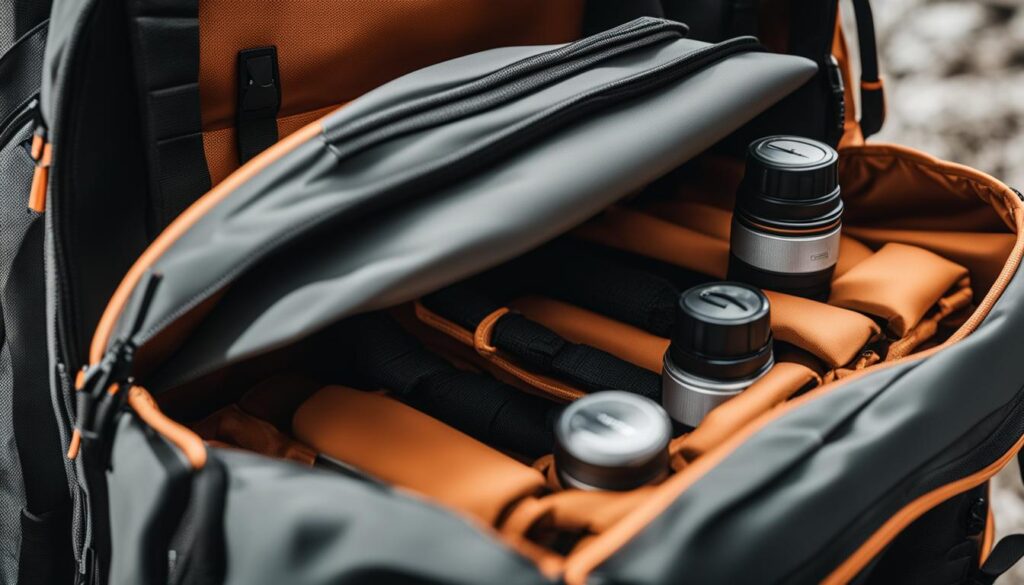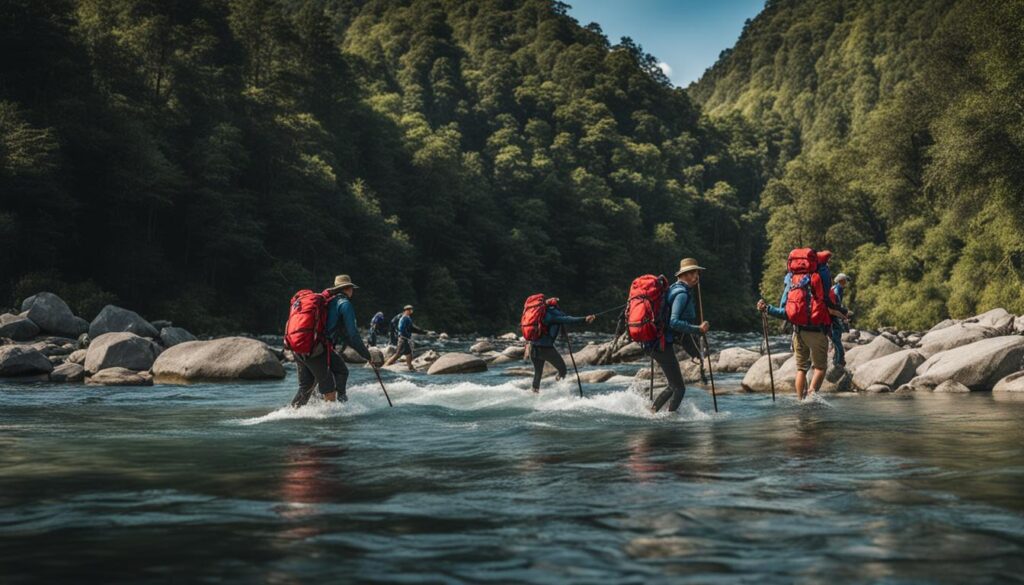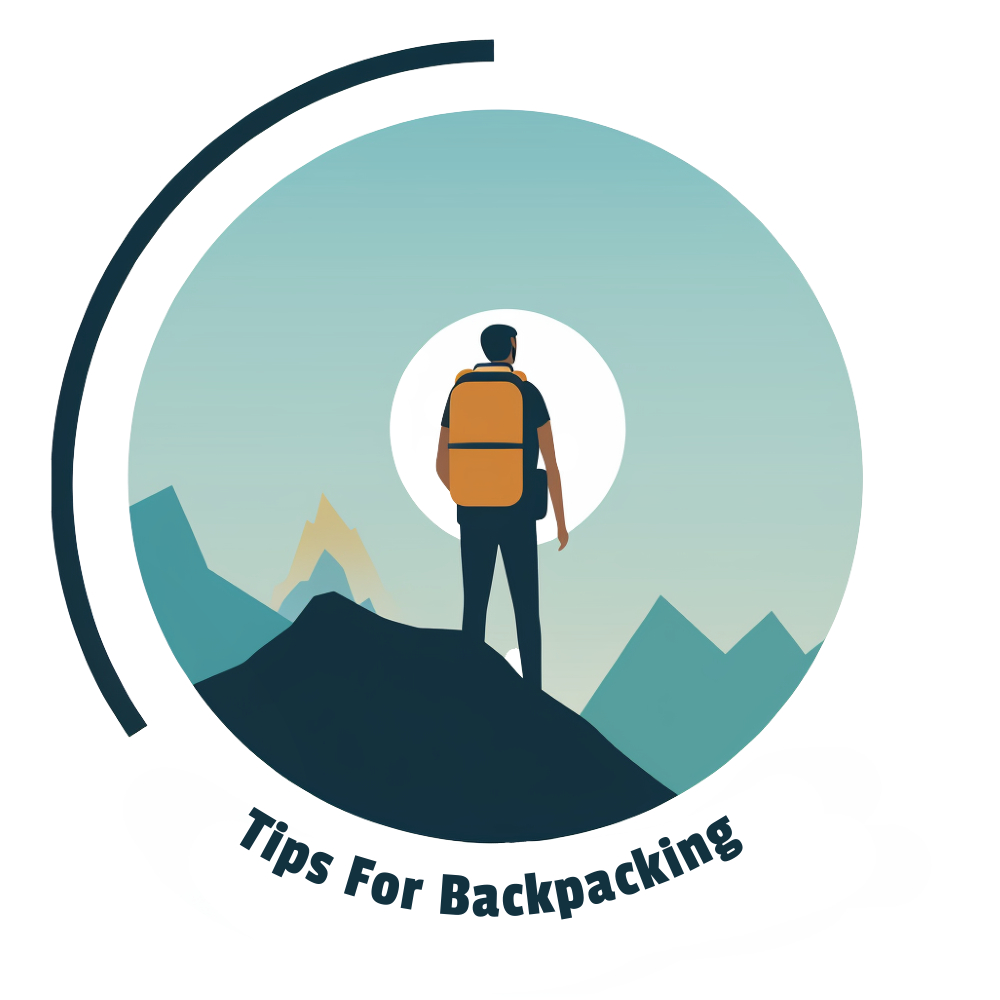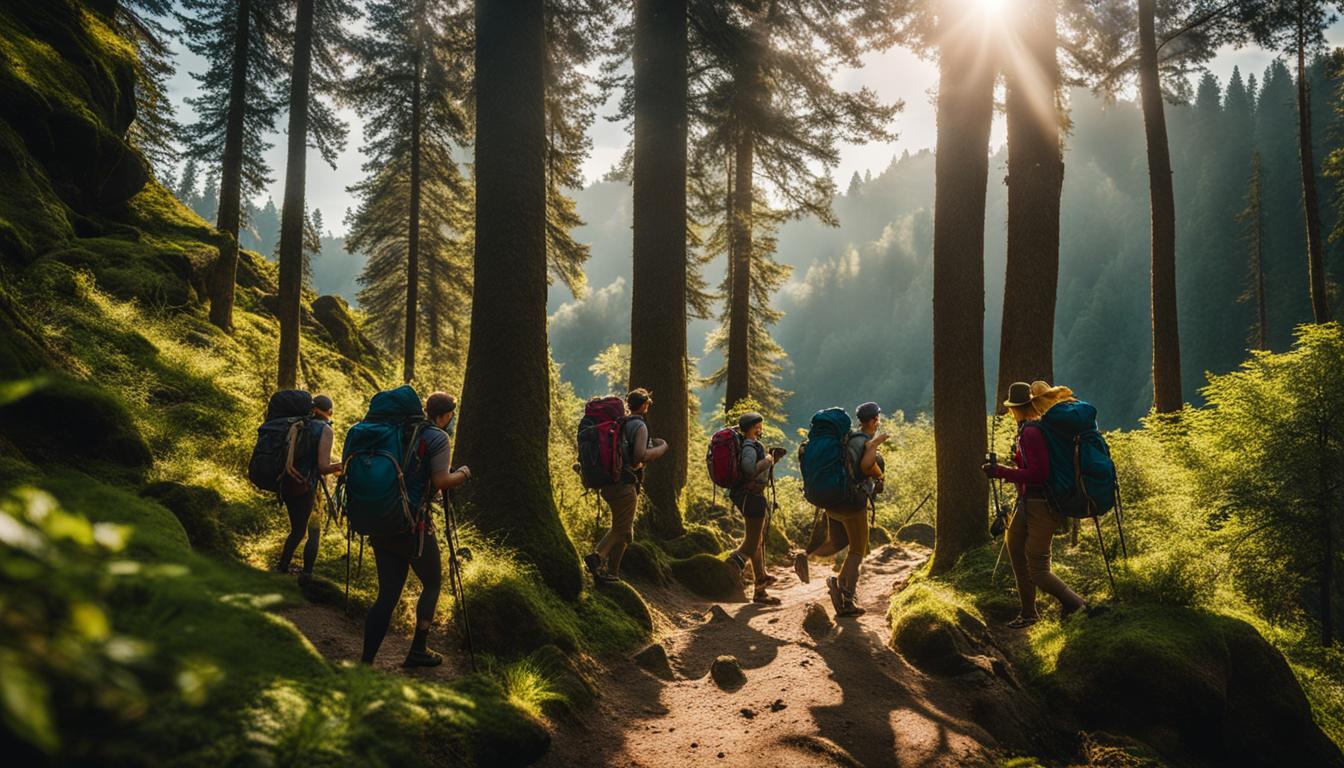Before embarking on your first backpacking adventure, it’s important to choose the right trail that suits your interests and abilities. Start by researching different regions that inspire you or have a personal connection. Use hiking apps like Gaia GPS, AllTrails, Hiking Project, and Komoot to find well-established routes. Consider backpacking in areas with amenities like restrooms, campsites, and water sources to ensure a comfortable experience. Learn about the elevation profile of the trail and choose one with mellow elevation gain for your first trip. Seek advice from experienced backpackers or local guides to gather more information before setting out.
Key Takeaways:
- Research and choose a trail that matches your interests and abilities
- Utilize hiking apps to find well-established routes
- Consider backpacking in areas with amenities for a more comfortable experience
- Learn about the elevation profile and choose a trail suitable for beginners
- Seek advice from experienced backpackers or local guides for additional information
Now that you have a better understanding of how to choose the right trail for your backpacking adventure, let’s move on to the next section where we’ll discuss essential gear and nutritional tips for backpacking.
Packing and Food: Essential Gear and Nutritional Tips for Backpacking

When it comes to backpacking, packing the right gear can make all the difference in having a comfortable and enjoyable trip. As a beginner, it’s important to prioritize lightweight and essential items to avoid overpacking. Start by investing in a good backpack that fits well and distributes weight evenly. Look for one that has multiple compartments and adjustable straps for a customized fit. Don’t forget a waterproof cover or liner to protect your belongings from the elements.
Another essential gear item is a high-quality sleeping bag that is lightweight and suitable for the expected weather conditions. Consider the temperature rating to ensure you stay warm throughout the night. A tent is also a must-have item for shelter, so choose one that is lightweight, easy to set up, and durable.
Now let’s talk about food. It’s important to bring nutritious and calorie-dense foods that will keep you fueled throughout your backpacking adventure. Dehydrated meals are a popular choice as they are lightweight, easy to prepare, and come in a variety of flavors. However, they can be expensive, so you might want to consider more affordable alternatives like ramen noodles and oatmeal.
In addition to your main meals, it’s important to pack snacks that are high in calories and provide quick energy. Some great options include nuts, peanut butter, energy bars, and dried fruits. Don’t forget to pack a backpacking checklist to ensure you have all the essential items, such as a first aid kit, navigation tools, appropriate clothing, and water purification systems.
Table: Backpacking Essentials
| Item | Description |
|---|---|
| Backpack | A lightweight and durable backpack with multiple compartments for storing gear. |
| Sleeping Bag | A high-quality sleeping bag suitable for the expected weather conditions. |
| Tent | A lightweight and easy-to-set-up tent for shelter. |
| Food | Nutritious and calorie-dense meals and snacks to keep you fueled. |
| First Aid Kit | A comprehensive first aid kit with essential medical supplies. |
| Navigation Tools | A compass, map, and GPS device to ensure you stay on track. |
| Appropriate Clothing | Layered clothing suitable for the expected weather conditions. |
| Water Purification Systems | A water filter or purification tablets to ensure access to clean drinking water. |
Essential Skills: Building Confidence and Safety in the Backcountry

When venturing into the backcountry as a beginner backpacker, it’s essential to develop the necessary skills to ensure both confidence and safety. Here are some tips to help you navigate the wilds with ease:
1. Navigation and Map Reading
Having a basic understanding of navigation and map reading is crucial for staying on track during your backpacking trip. Familiarize yourself with topographic maps, trail markers, and compass use. Practice using these tools in familiar areas before tackling more challenging routes.
2. Wilderness First Aid
Accidents happen, especially in the backcountry. It’s highly recommended to take a wilderness first aid course to prepare yourself for emergencies. Learn how to administer first aid, handle common injuries like sprains and cuts, and be prepared to stay calm and make critical decisions in high-stress situations.
3. Leave No Trace Principles
Preserving the pristine beauty of the backcountry is of utmost importance. Familiarize yourself with the Leave No Trace principles: plan ahead and prepare, travel and camp on durable surfaces, dispose of waste properly, leave what you find, minimize campfire impacts, respect wildlife, and be considerate of other visitors. By following these guidelines, you’ll leave a minimal impact on the environment and ensure the enjoyment of future backpackers.
| Navigation and Map Reading | Wilderness First Aid | Leave No Trace Principles |
|---|---|---|
| Understand topographic maps | Administer first aid in the wilderness | Plan ahead and prepare |
| Learn to read trail markers | Handle common injuries | Travel and camp on durable surfaces |
| Practice using a compass | Stay calm in high-stress situations | Dispose of waste properly |
Remember, safety should always be your top priority. If you’re unsure about a certain trail or feel uneasy about a situation, trust your instincts and make the necessary adjustments. Building confidence in the backcountry takes time, so start small and gradually increase the difficulty of your backpacking trips. With each adventure, you’ll gain valuable experience that will enhance your skills and make your backpacking journey even more enjoyable.
In the next section, we’ll wrap up our backpacking guide with some final tips and a conclusion to prepare you for your upcoming adventure.
Can Beginners Use a Compass and Map for Backpacking?
Yes, beginners can absolutely enjoy backpacking with compass and map. Learning these navigation tools is essential for wilderness exploration. With some basic instruction and practice, even novice hikers can confidently navigate trails and terrain. The combination of a compass and map provides a reliable backup to GPS devices and smartphones.
Conclusion
As I wrap up this backpacking guide for beginners, I hope you’re feeling excited and ready to embark on your first adventure! Remember, the key to a successful trip is thorough preparation. Choose a trail that speaks to your interests and research it well. Take advantage of hiking apps to find established routes and seek advice from experienced backpackers or local guides.
Once you’ve chosen your trail, packing the right gear is essential. Invest in a lightweight backpack, sleeping bag, and tent, and pack only the essentials. Don’t forget to bring calorie-dense foods to fuel your hike, and consider taking a wilderness first aid course to ensure your safety.
Finally, as you set foot in the backcountry, embrace the skills and mindset that will make your journey enjoyable. Stay aware of your surroundings, trust your instincts, and communicate openly with your hiking partners. With these guidelines in mind, you’re ready to explore the wonders of nature and experience the thrill of backpacking. So, grab your gear and hit the trails! Happy backpacking!

